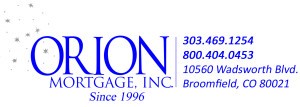The Impact of Current Events on Reverse Mortgage Decisions
In this time of financial uncertainty, we are seeing renewed interest in Reverse Mortgages for three primary reasons:
• Concern over the rapid drop in the value of financial investments. With the stock and bond markets exhibiting high volatility and large drops in value, people who have a Reverse Mortgage line of credit can use the line instead of selling depressed financial assets.
• Concern over a potential drop in real estate values. We just received an application from a borrower who wants to close as soon as possible to be ahead of any drop in the real estate market.
• Interest in a “payment optional” loan. People often think of a Reverse Mortgage only as a way to get money from the equity in their home. It is also a loan that allows the borrower to make payments to reduce the loan balance when they are employed, and either skip payments or draw money out when employment is interrupted. This can be an excellent option for anyone over 62 that is still employed. This works best if the loan is in place before employment is interrupted.
For those who have a Reverse Mortgage in place, now is a good time to review the current loan for a possible refinance. You may already be receiving mailings and other solicitations to refinance based on public record data. Rather than calling one of these unknown entities, if you are curious about your options, we are happy to provide a free, no-obligation analysis of your loan to see if a refinance makes sense.
Factors that make refinancing an existing Reverse Mortgage a viable option:
• The property has increased in value enough so you could have access to more money.
• Interest rates have dropped so you could access more money or slow the liquidation of your equity.
• You have a fixed rate HECM now and would like to have a line of credit or monthly payments.
There are many ways to structure a new Reverse Mortgage, depending on your situation:
• Some borrowers qualify for a no cost refinance where the lender pays all the closing costs and no closing costs are added to the loan balance.
• Non-FHA Reverse Mortgage products with closing costs as low as $125. All other closing costs are paid by the lender.
• Traditional cost structures where the closing costs are added to the loan balance to get the lowest rate.
• Borrower-paid taxes and insurance OR a life expectancy set aside to pay taxes and insurance.
• We have other variations between the above.
• Fixed rate and adjustable rate products.
• Products that work best with an initial draw of $100,000 or more and others that require no draw at closing.
Call Don Opeka at 303-469-1254 to learn more!
